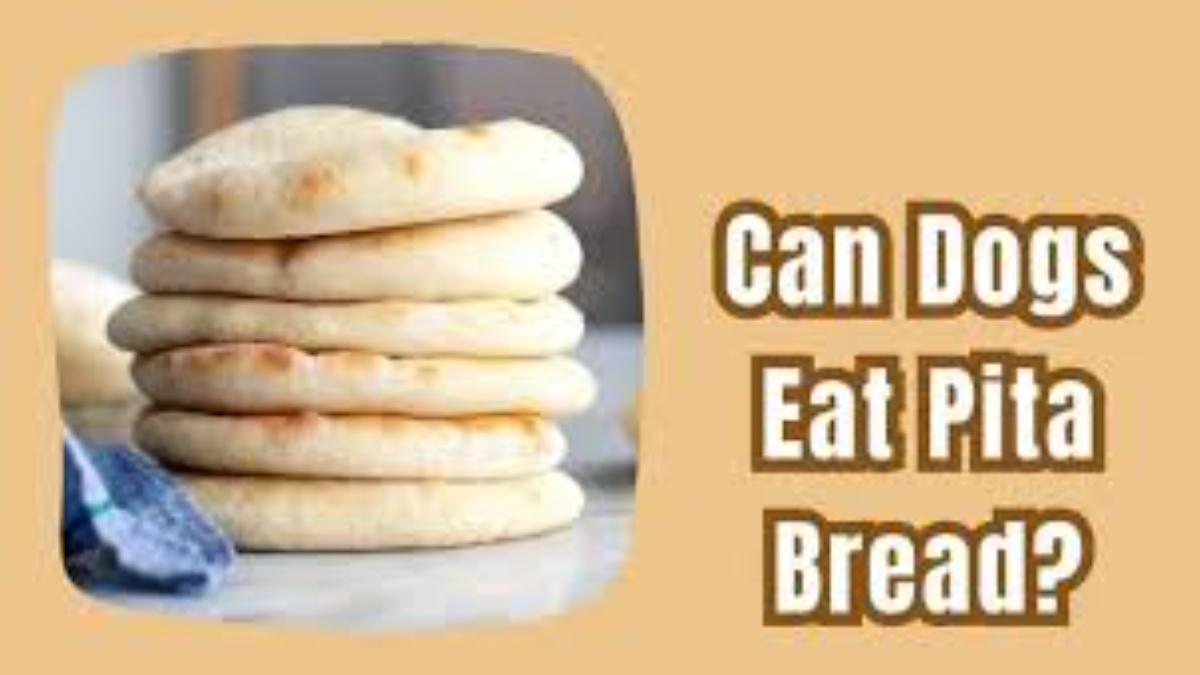As pet owners, our dietary choices for our dogs are not just about their taste preferences; they are crucial for their overall health and vitality. You, as a pet owner, play a significant role in this. We often find ourselves in a maze, trying to ensure the safety and nutritional appropriateness of incorporating human foods into our furry companions’ diets. Explore more about the importance of dietary choices for dogs at Pets Care Insiders.
For pet owners, the quest for clarity regarding human foods’ safety and nutritional compatibility with their four-legged friends is an ongoing journey. You are not alone in this. As dietary considerations hold profound implications for canine well-being, understanding which foods are suitable becomes imperative in fostering optimal health for our cherished companions.
Can dogs eat pita bread?
Have you ever wondered if your dog can enjoy the same foods as you do? Pita bread, a staple in many international cuisines, is one such food that raises questions among pet owners.
This article will analyze the ingredients of pita bread, discuss the advantages and disadvantages of feeding it to dogs, and offer suggestions for making wise choices, including portion control and potential modifications to the recipe.
Ingredients in Pita Bread
Pita bread, which originates from the Middle East, is well-known worldwide for its distinct pocket shape and soft, chewy texture. It is a cornerstone of Mediterranean and Middle Eastern cuisines and is typically made with flour, water, yeast, salt, and sometimes olive oil.
The ingredients used to make pita bread are simple, consisting primarily of flour, water, yeast, salt, and occasionally olive oil. These essential components are combined to form a dough, which is then divided, shaped, and baked to perfection.
While the ingredients in pita bread are generally safe for human consumption, their compatibility with canine physiology requires closer examination. Pet owners must consider the nutritional composition of pita bread and any potential risks associated with its consumption by dogs.
Risks of Feeding Pita Bread to Dogs
Can dogs eat pita bread? While pita bread may seem innocuous at first glance, several potential risks are associated with feeding it to dogs. One concern is the carbohydrate content of pita bread, which can contribute to weight gain and obesity if consumed in excess.
Additionally, the high glycemic index of refined flour used in many pita bread recipes may lead to spikes in blood sugar levels, posing a risk for dogs with diabetes or insulin resistance. Furthermore, some dogs may experience digestive upset or food allergies due to certain ingredients in pita bread, such as wheat or yeast. Pet owners must monitor their dog’s reaction to pita bread and discontinue feeding it if any adverse effects occur.
Benefits of Feeding Pita Bread to Dogs
When given to dogs in moderation, pita bread may have some advantages despite the risks. Dogs can get energy and fuel from pita bread, a good carbohydrate source, for their daily activities. Furthermore, pita bread has less fat and cholesterol than other bread varieties, which makes it a healthier option than those that might have more of these nutrients.
Additionally, by lowering plaque and tartar accumulation on their teeth, pita bread’s chewy texture can improve dogs’ dental health. When given to dogs occasionally as a treat and as a part of a balanced diet, pita bread can be a safe and entertaining snack.
Alternatives to Pita Bread for Dogs
When giving their dogs a tasty and healthy snack, pet owners should consider a few secure substitutes for pita bread. Cooked whole grains can provide dogs with fiber and carbohydrates, such as brown rice, oats, and quinoa. Additionally, fruits and vegetables such as carrots, apples, and sweet potatoes make excellent low-calorie dog snacks, providing essential vitamins, minerals, and antioxidants.
Commercially available dog treats made with natural, wholesome ingredients can also be convenient for pet owners seeking a tasty and nutritious snack without the potential risks associated with human foods like pita bread.
Conclusion
Pita bread may be a tempting treat to share with our canine companions. Still, its suitability for canine consumption depends on various factors, including its ingredients, nutritional composition, and potential risks.
Pet owners must weigh the possible benefits and risks of feeding pita bread to their dogs and make informed decisions based on their pet’s needs and dietary requirements. By offering pita bread in moderation and as part of a balanced diet, pet owners can ensure that their canine companions enjoy a safe and enjoyable culinary experience, free from unnecessary risks and complications.
